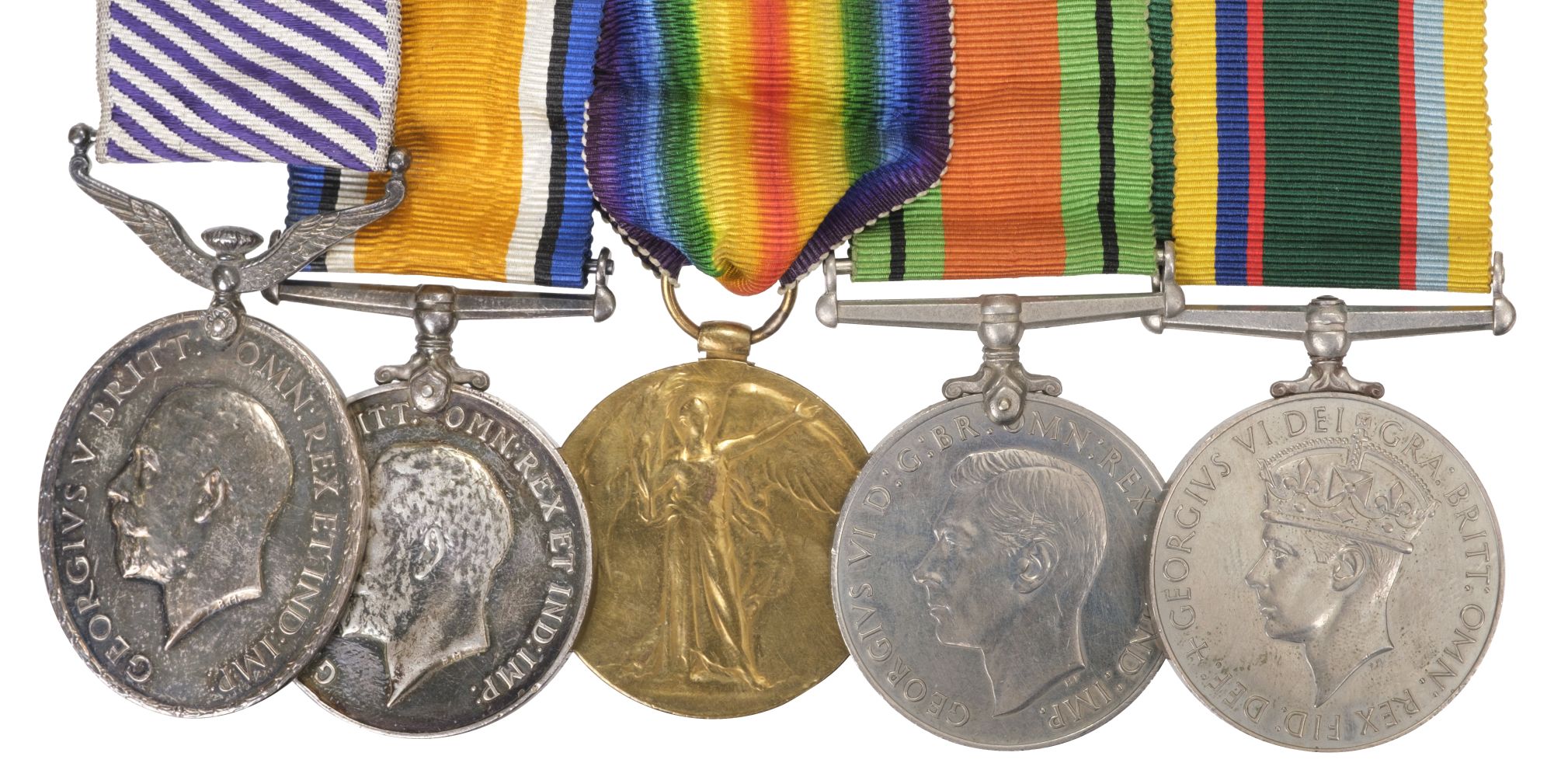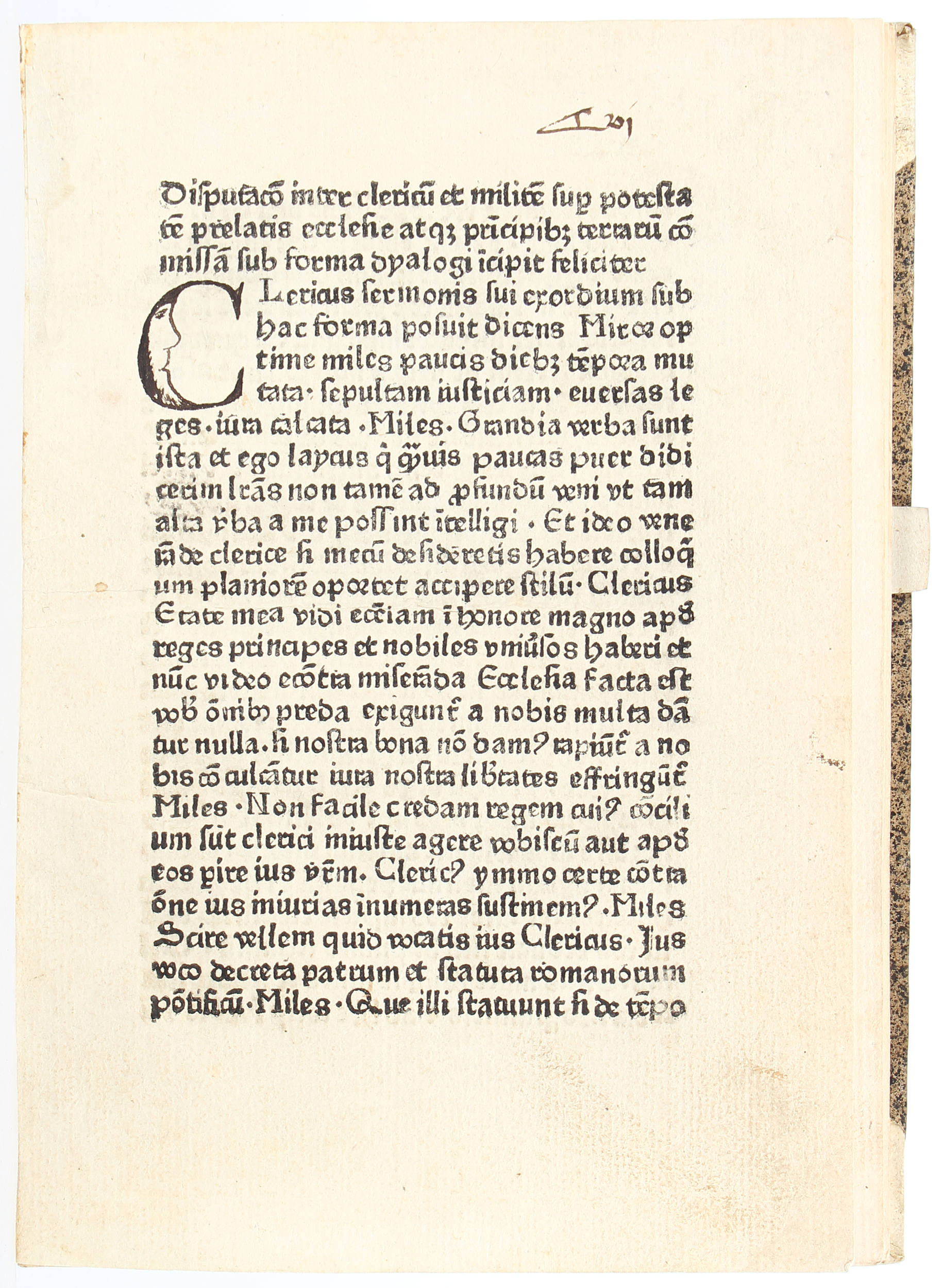A scarce inter-war ‘Kurdistan’ D.F.C. group of five awarded to Bristol Fighter pilot, Squadron Leader A. T. K. Shipwright, 6 Squadron, Royal Air Force, a veteran of the Great War who was shot down in combat over enemy lines East of Ypres, 16 August 1917, whilst serving with 19 Squadron. Taken prisoner of war, Shipwright was a persistent escaper, and was one of the ‘Holzminden Tunnellers’ - taking part in the largest and most celebrated POW escape of the Great War, 24/25 July 1918 Distinguished Flying Cross, G.V.R.; The Order of St. John of Jerusalem, Officer‘s breast badge, silver and enamel, minor enamel damage; British War and Victory Medals, M.I.D. Oak Leaves (Lieut. A. T. K. Shipwright. R.A.F.); General Service 1918-62, 2 clasps, Kurdistan, Palestine (F/O A. T. K. Shipwright. R.A.F.) unofficial retaining rod between clasps of last, mounted as originally worn, lacquered, generally very fine (5) £3,000-£4,000 Footnote Provenance: Christie’s, November 1984. D.F.C. London Gazette 11 June 1924: ‘For distinguished service rendered during the operations in Kurdistan between 15th February and 19th June, 1923.’ The original recommendation states: ‘For untiring energy, gallantry and devotion to duty. Flying Officer Shipwright has carried out over 359 hours’ flying during operations. His work has been of a most valuable nature and in many cases has been done under conditions of the greatest danger.’ Order of St. John, Officer London Gazette 12 June 1926. M.I.D. London Gazette 16 December 1919: ‘For valuable services whilst in captivity.’ Alan Thomas Kingston Shipwright was born at St. George’s Square, London in May 1897. He was the son of an actor, and had two brothers who both went on to serve as Squadron Leaders in the Royal Air Force. Shipwright attested for the 3/1st Kent Cyclists Battalion, Territorial Force in May 1915. He transferred to the 2/3rd (Kent Brigade) Company, Army Service Corps two months later. Shipwright was discharged on re-enlistment into the Royal Flying Corps in May 1916, and attested as Air Mechanic 2nd Class for the duration of the war. Shipwright advanced to Sergeant and was employed piloting BE2c’s at night from Hornchurch, Essex. Flying during the first ‘Battle of Britain’, Shipwright is recorded as being on an intruder patrol 2/3 September 1916 when Lieutenant William Leefe Robinson, only a short distance away, shot down the Zeppelin at Cuffley. Shipwright was commissioned Temporary Second Lieutenant (On Probation) in June 1917, and was posted for operational flying to 19 Squadron (Spads) on the Western Front. Shipwright’s time in the air was short-lived, as he was shot down in combat over enemy lines East of Ypres, 16 August 1917. He later wrote: ‘The particular patrol that I was on was from Poperinghe aerodrome for the first time; when flight commenced weather was showery; after three quarters of an hour flying the thunder clouds completely drove me away from my flight and at many times upset control of machine; there was a strong westerly gale blowing, which I put down as the reason of my being driven so many miles East.’ Shipwright was captured by the Germans and taken to Karlsruhe transit camp, from where he promptly escaped. He was recaptured and transferred to the officers’ lager at Holzminden, Brunswick. Shipwright was there in time to take part in the largest and most celebrated POW escape of the Great War, 24/25 July 1918. The tunnel at Holzminden had taken 9 months to dig, and by the evening of the 24th a roster of 86 officers were waiting to escape. The tunnel partially collapsed on the 30th man through, meaning that only 29 (including Shipwright) made their escape by crawling through it. Only 10 of the 29 successfully avoided recapture, and unfortunately for Shipwright he was not amongst them. Shipwright was punished with 3 weeks solitary confinement, after which he escaped for a third and final time. This time he was recaptured just short of the Dutch border. After the war he was M.I.D. ‘Fo
A scarce inter-war ‘Kurdistan’ D.F.C. group of five awarded to Bristol Fighter pilot, Squadron Leader A. T. K. Shipwright, 6 Squadron, Royal Air Force, a veteran of the Great War who was shot down in combat over enemy lines East of Ypres, 16 August 1917, whilst serving with 19 Squadron. Taken prisoner of war, Shipwright was a persistent escaper, and was one of the ‘Holzminden Tunnellers’ - taking part in the largest and most celebrated POW escape of the Great War, 24/25 July 1918 Distinguished Flying Cross, G.V.R.; The Order of St. John of Jerusalem, Officer‘s breast badge, silver and enamel, minor enamel damage; British War and Victory Medals, M.I.D. Oak Leaves (Lieut. A. T. K. Shipwright. R.A.F.); General Service 1918-62, 2 clasps, Kurdistan, Palestine (F/O A. T. K. Shipwright. R.A.F.) unofficial retaining rod between clasps of last, mounted as originally worn, lacquered, generally very fine (5) £3,000-£4,000 Footnote Provenance: Christie’s, November 1984. D.F.C. London Gazette 11 June 1924: ‘For distinguished service rendered during the operations in Kurdistan between 15th February and 19th June, 1923.’ The original recommendation states: ‘For untiring energy, gallantry and devotion to duty. Flying Officer Shipwright has carried out over 359 hours’ flying during operations. His work has been of a most valuable nature and in many cases has been done under conditions of the greatest danger.’ Order of St. John, Officer London Gazette 12 June 1926. M.I.D. London Gazette 16 December 1919: ‘For valuable services whilst in captivity.’ Alan Thomas Kingston Shipwright was born at St. George’s Square, London in May 1897. He was the son of an actor, and had two brothers who both went on to serve as Squadron Leaders in the Royal Air Force. Shipwright attested for the 3/1st Kent Cyclists Battalion, Territorial Force in May 1915. He transferred to the 2/3rd (Kent Brigade) Company, Army Service Corps two months later. Shipwright was discharged on re-enlistment into the Royal Flying Corps in May 1916, and attested as Air Mechanic 2nd Class for the duration of the war. Shipwright advanced to Sergeant and was employed piloting BE2c’s at night from Hornchurch, Essex. Flying during the first ‘Battle of Britain’, Shipwright is recorded as being on an intruder patrol 2/3 September 1916 when Lieutenant William Leefe Robinson, only a short distance away, shot down the Zeppelin at Cuffley. Shipwright was commissioned Temporary Second Lieutenant (On Probation) in June 1917, and was posted for operational flying to 19 Squadron (Spads) on the Western Front. Shipwright’s time in the air was short-lived, as he was shot down in combat over enemy lines East of Ypres, 16 August 1917. He later wrote: ‘The particular patrol that I was on was from Poperinghe aerodrome for the first time; when flight commenced weather was showery; after three quarters of an hour flying the thunder clouds completely drove me away from my flight and at many times upset control of machine; there was a strong westerly gale blowing, which I put down as the reason of my being driven so many miles East.’ Shipwright was captured by the Germans and taken to Karlsruhe transit camp, from where he promptly escaped. He was recaptured and transferred to the officers’ lager at Holzminden, Brunswick. Shipwright was there in time to take part in the largest and most celebrated POW escape of the Great War, 24/25 July 1918. The tunnel at Holzminden had taken 9 months to dig, and by the evening of the 24th a roster of 86 officers were waiting to escape. The tunnel partially collapsed on the 30th man through, meaning that only 29 (including Shipwright) made their escape by crawling through it. Only 10 of the 29 successfully avoided recapture, and unfortunately for Shipwright he was not amongst them. Shipwright was punished with 3 weeks solitary confinement, after which he escaped for a third and final time. This time he was recaptured just short of the Dutch border. After the war he was M.I.D. ‘Fo



/122412/Internet%20Image%201.jpg)
/123864/Internet%20Image%201.jpg)




/123133/Internet%20Image%201.jpg)
/77860/Internet%20Image%201.jpg)
/127989/Internet%20Image%201.jpg)



Testen Sie LotSearch und seine Premium-Features 7 Tage - ohne Kosten!
Lassen Sie sich automatisch über neue Objekte in kommenden Auktionen benachrichtigen.
Suchauftrag anlegen